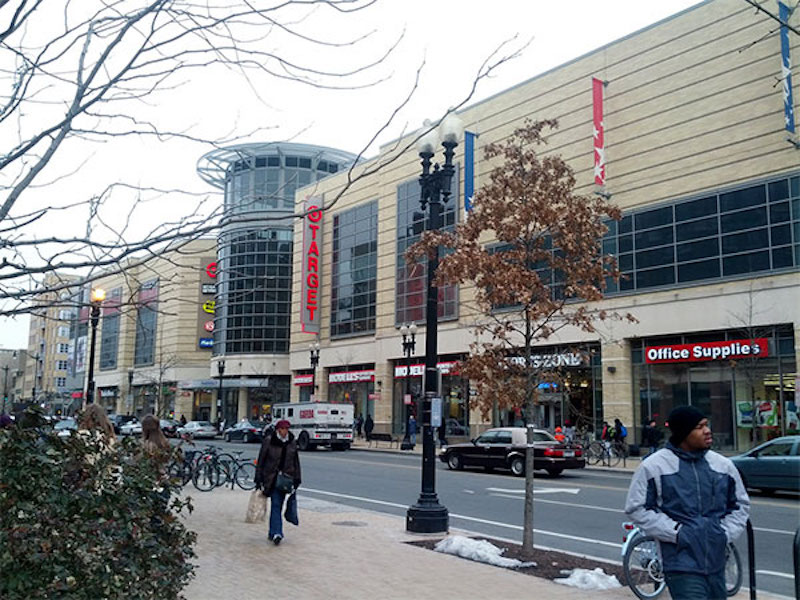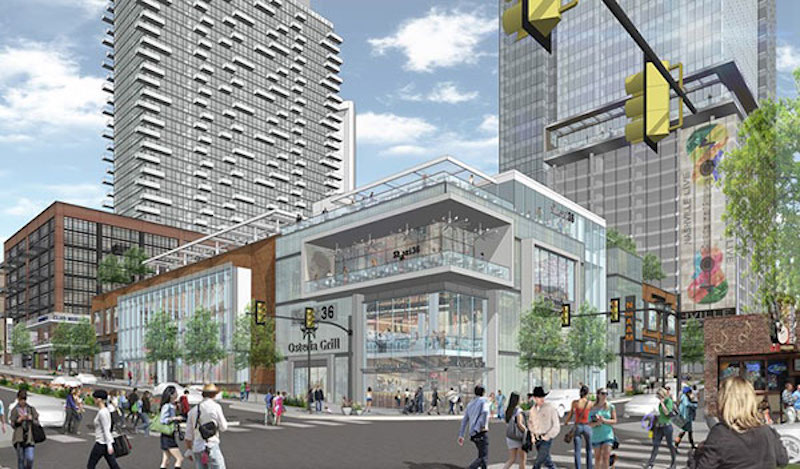At a glance, many of the latest retail trends strike me as incongruous. Retail demand continues to grow, but retailers are falling short of sales goals and closing stores at an alarming rate. In 2017, Macy’s will close 68 of its 750 locations nationwide, Kmart/Sears will close 150 stores and JCPenney plans to close 140 locations. Already this year, The Limited and Wet Seal closed every single one of their stores across the country, 250 and 171 locations, respectively. These numbers fly in the face of statistics indicating that retails sales in 2017 are expected to rise 3.9% (a higher rate than 2016). Clearly, people are still shopping, but where and how they’re shopping is changing dramatically.

One shared characteristic among the retailers I just mentioned? They were predominantly in indoor shopping malls, and they emphasized brick-and-mortar sales over web sales. When malls were at the zenith of their popularity in the early 1990s, people appreciated the convenience of browsing a variety of retailers in close proximity. These days, the convenience and variety of online shopping is far superior. And the physical environment of the mall – with its endless corridors, fluorescent lights and cookie-cutter homogeneity (if you’ve been to one indoor mall, you’ve been to them all) – now seems outdated and out-of-touch with consumer preferences.
But the decline of the shopping mall and the increase in online sales are only two of the trends shaping the evolution of the retail world. We’re seeing more and more mixed-use developments that often combine retail options with dining, entertainment, arts and culture, hotels and even residential space (with this mix of uses diversifying traffic patterns). We’re seeing a cultural shift toward urbanization, where traditional big-box retailers are rolling out smaller-footprint store models targeted at urban markets and catering to the Millennial generation. And we’re seeing increased patronage of independent, “mom and pop” retail stores.
 An urban-format Target store blends in on a city street.
An urban-format Target store blends in on a city street.
While it may not be obvious, I think there’s one common theme among the successful retailers in today’s market: an emphasis on customer experience. It’s where indoor malls fall short and mixed-use developments, independent shops and forward-thinking big-box retailers thrive. Shopping has gradually become much less transaction-focused and more experience-focused, as consumers place more value on authenticity, atmosphere, convenience and social interaction. And that’s where architecture and interior design come in.
A great example is Yeti’s first retail store in Austin, Texas. Actually, I would hardly call it a store. It’s more of a Yeti museum, where first and foremost guests are immersed in the Yeti brand and purchases take a backseat. People visit the “store” to connect with the Yeti culture– and each other. If they walk out with a Yeti cooler or t-shirt, it’s a win, but priority is placed on interactions and ambiance that create long-lasting Yeti fans. The design of the space evokes a unique, outdoorsy, Texas-esque vibe, with a boating exhibit, barbecue exhibit, taxidermy animals and video displays. Even if guests don’t make a purchase that day, they’re sure to think of Yeti first when they need a cooler weeks, months or years down the road. Essentially, new brick-and-mortar retail is more about brand advocacy than direct sales.
Other examples? Major retailers like Best Buy and Bass Pro Shops are adding value to the customer experience by providing interactive product demonstrations and virtual reality experiences in-store. And even online retailers like Amazon are opening brick-and-mortar stores that support a register-free check-out process. In each of these cases, the focus is on creating pleasant customer experiences.
 GS&P's design for the 5th + Broadway mixed-use development in downtown Nashville creates a rich experience not limited to only retail.
GS&P's design for the 5th + Broadway mixed-use development in downtown Nashville creates a rich experience not limited to only retail.
Our team at GS&P is taking these trends to heart and working every day to help our clients put the customer experience at center stage and reinforce brands through design. We want to create retail spaces with memorable environments where shopping isn’t the only destination. By activating streets and sidewalks, pedestrian-friendly mixed-use developments and retail stores invite customers outside where they can connect with the surrounding community and enjoy a variety of complementary experiences – like dinner at a local restaurant or a concert. To set the scene: picture visiting a store that’s right next to a new art gallery, with people living above the space and a live band playing in the courtyard. That’s the future of retail.
More from Author
Gresham Smith | Oct 16, 2024
How AI can augment the design visualization process
Blog author Tim Beecken, AIA, uses the design of an airport as a case-study for AI’s potential in design visualizations.
Gresham Smith | Aug 17, 2023
How to design for adaptive reuse: Don’t reinvent the wheel
Gresham Smith demonstrates the opportunities of adaptive reuse, specifically reusing empty big-box retail and malls, many of which sit unused or underutilized across the country.
Gresham Smith | May 24, 2023
Designing spaces that promote enrollment
Alyson Mandeville, Higher Education Practice Leader, argues that colleges and universities need to shift their business model—with the help of designers.
Gresham Smith | Apr 24, 2023
Smart savings: Commissioning for the hybrid workplace
Joe Crowe, Senior Mechanical Engineer, Gresham Smith, shares smart savings tips for facility managers and building owners of hybrid workplaces.
Gresham Smith | Mar 20, 2023
3 ways prefabrication doubles as a sustainability strategy
Corie Baker, AIA, shares three modular Gresham Smith projects that found sustainability benefits from the use of prefabrication.
Gresham Smith | Jan 19, 2023
Maximizing access for everyone: A closer look at universal design in healthcare facilities
Maria Sanchez, Interior Designer at Gresham Smith, shares how universal design bolsters empathy and equity in healthcare facilities.
Gresham Smith | Dec 20, 2022
Designing for a first-in-the-world proton therapy cancer treatment system
Gresham Smith begins designing four proton therapy vaults for a Flint, Mich., medical center.
Gresham Smith | Nov 21, 2022
An inside look at the airport industry's plan to develop a digital twin guidebook
Zoë Fisher, AIA explores how design strategies are changing the way we deliver and design projects in the post-pandemic world.
Gresham Smith | Feb 13, 2022
Helping maximize project dollars: Utility coordination 101
In this post, I take a look at the utility coordination services our Transportation group offers to our clients in an attempt to minimize delays and avoid unforeseen costs.
Gresham Smith | May 7, 2021
Private practice: Designing healthcare spaces that promote patient privacy
If a facility violates HIPAA rules, the penalty can be costly to both their reputation and wallet, with fines up to $250,000 depending on the severity.
















